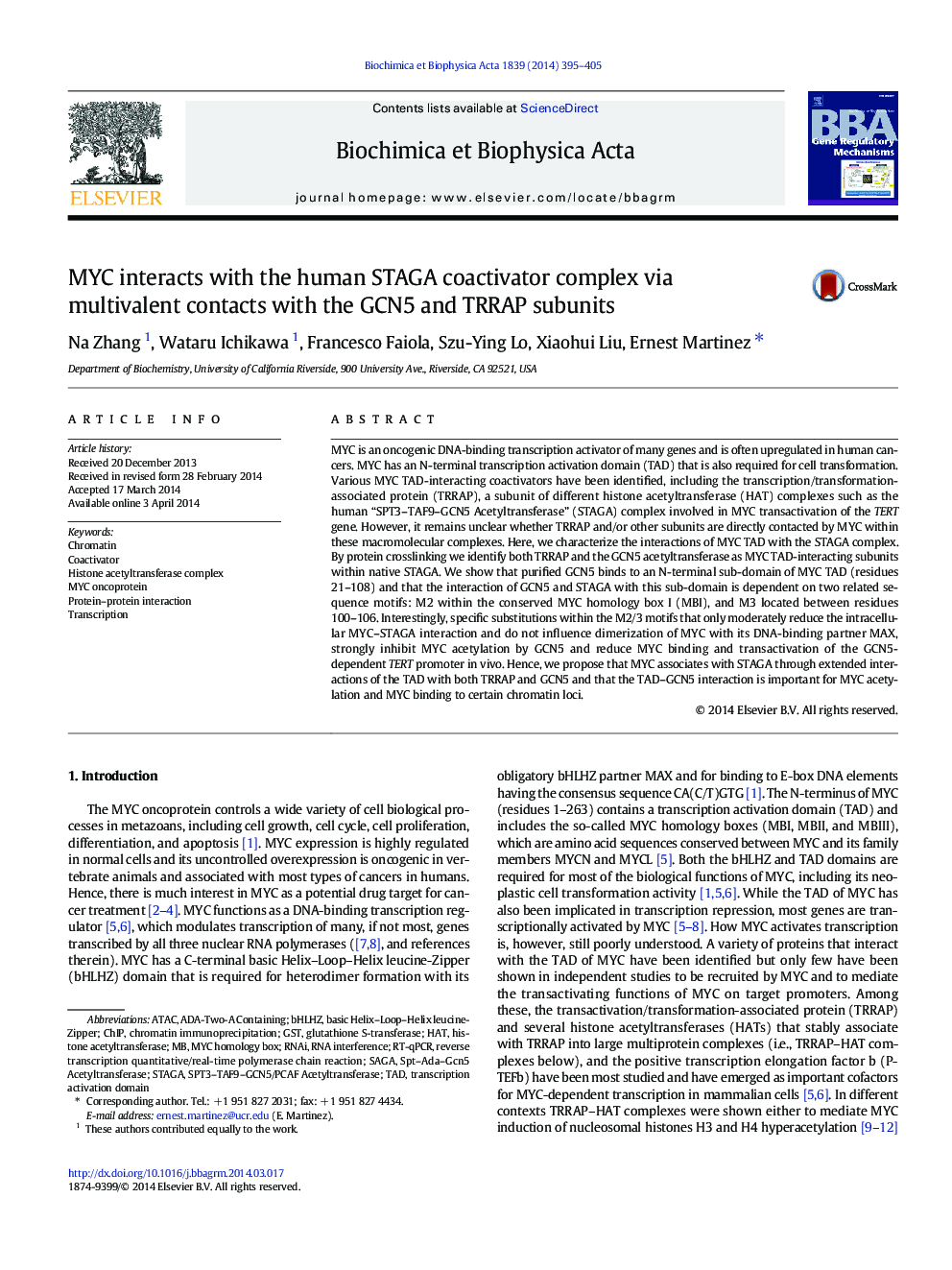| کد مقاله | کد نشریه | سال انتشار | مقاله انگلیسی | نسخه تمام متن |
|---|---|---|---|---|
| 1946455 | 1054239 | 2014 | 11 صفحه PDF | دانلود رایگان |

• Protein crosslinking identified MYC-interacting subunits in native STAGA complexes.
• MYC transactivation domain (TAD) contacts both TRRAP and the GCN5 acetyltransferase.
• GCN5 directly binds the MBI-containing 21–108 region of MYC TAD.
• Several motifs in the MBI region are important for MYC binding to GCN5 and STAGA.
• The TAD facilitates MYC acetylation and recruitment to the TERT promoter in vivo.
MYC is an oncogenic DNA-binding transcription activator of many genes and is often upregulated in human cancers. MYC has an N-terminal transcription activation domain (TAD) that is also required for cell transformation. Various MYC TAD-interacting coactivators have been identified, including the transcription/transformation-associated protein (TRRAP), a subunit of different histone acetyltransferase (HAT) complexes such as the human “SPT3–TAF9–GCN5 Acetyltransferase” (STAGA) complex involved in MYC transactivation of the TERT gene. However, it remains unclear whether TRRAP and/or other subunits are directly contacted by MYC within these macromolecular complexes. Here, we characterize the interactions of MYC TAD with the STAGA complex. By protein crosslinking we identify both TRRAP and the GCN5 acetyltransferase as MYC TAD-interacting subunits within native STAGA. We show that purified GCN5 binds to an N-terminal sub-domain of MYC TAD (residues 21–108) and that the interaction of GCN5 and STAGA with this sub-domain is dependent on two related sequence motifs: M2 within the conserved MYC homology box I (MBI), and M3 located between residues 100–106. Interestingly, specific substitutions within the M2/3 motifs that only moderately reduce the intracellular MYC–STAGA interaction and do not influence dimerization of MYC with its DNA-binding partner MAX, strongly inhibit MYC acetylation by GCN5 and reduce MYC binding and transactivation of the GCN5-dependent TERT promoter in vivo. Hence, we propose that MYC associates with STAGA through extended interactions of the TAD with both TRRAP and GCN5 and that the TAD–GCN5 interaction is important for MYC acetylation and MYC binding to certain chromatin loci.
Figure optionsDownload high-quality image (140 K)Download as PowerPoint slide
Journal: Biochimica et Biophysica Acta (BBA) - Gene Regulatory Mechanisms - Volume 1839, Issue 5, May 2014, Pages 395–405